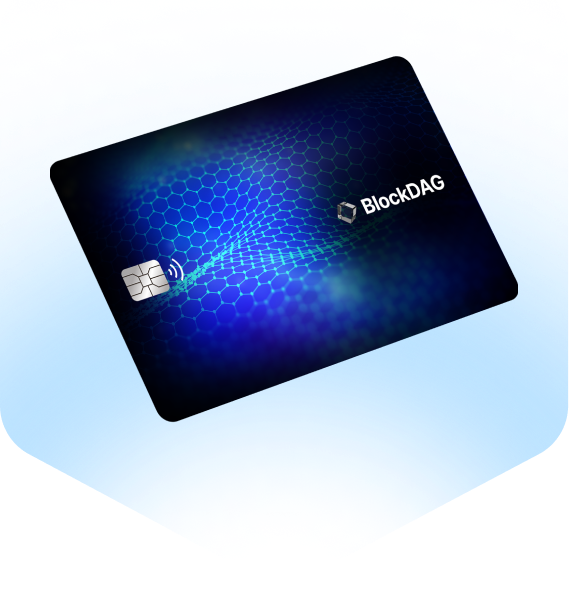Blockchain technology has revolutionized digital transactions, but it faces limitations such as scalability and transaction speed. A new and advanced structure, BlockDAG, is emerging as an innovative solution. BlockDAG (Directed Acyclic Graph) enhances blockchain by offering faster transaction processing, better security, and improved decentralization.
This article explores BlockDAG in detail, covering its structure, advantages, use cases, and how it compares to traditional blockchain technology.
What is BlockDAG?
BlockDAG, or Block Directed Acyclic Graph, is a variation of blockchain technology designed to improve scalability and efficiency. Unlike traditional blockchain, where blocks form a linear chain, BlockDAG allows multiple blocks to be linked simultaneously. This creates a more interconnected and decentralized system, enabling higher transaction throughput.
BlockDAG structures transactions in a graph-like format, reducing bottlenecks and allowing multiple blocks to confirm transactions concurrently. This significantly enhances processing speed and efficiency.
Also Read: Kohl’s Credit Card A Guide to Benefits, Application Process
How Does BlockDAG Work?
1. Decentralized and Non-Linear Structure
In a traditional blockchain, each block connects to a single previous block, forming a linear chain. However, in BlockDAG, blocks are linked in a graph format, allowing parallel transactions and reducing congestion.
2. Improved Consensus Mechanism
BlockDAG utilizes advanced consensus mechanisms like Proof of Work (PoW), Proof of Stake (PoS), or hybrid models. These mechanisms enhance security while ensuring fast transaction validation.
3. Faster Transaction Processing
Since multiple blocks can be added simultaneously, BlockDAG enables higher transaction throughput. This makes it a more efficient solution for networks requiring rapid processing speeds.
Advantages of BlockDAG Over Traditional Blockchain
1. Enhanced Scalability
Traditional blockchain struggles with scalability due to its sequential nature. BlockDAG eliminates this issue by allowing multiple transactions to be processed simultaneously, making it a better fit for large-scale applications.
2. Faster Transaction Speeds
With its ability to process multiple blocks concurrently, BlockDAG significantly reduces transaction confirmation time. This is a crucial advantage for industries requiring quick and efficient digital transactions.
3. Increased Security
BlockDAG’s decentralized nature makes it resistant to attacks like 51% attacks. Since blocks are linked in a complex web rather than a single chain, altering the transaction history is much more challenging for malicious actors.
4. Energy Efficiency
Compared to traditional blockchain networks that rely on energy-intensive mining, BlockDAG can be designed to use more efficient consensus mechanisms, reducing overall energy consumption.
5. Better Support for Smart Contracts
BlockDAG technology enhances the efficiency of smart contracts, making them execute faster and more securely. This improves applications in industries such as finance, supply chain management, and healthcare.
Use Cases of BlockDAG
1. Cryptocurrency and Digital Payments
BlockDAG is being integrated into cryptocurrency projects to provide faster and more scalable transactions. This ensures lower fees and quicker confirmations, enhancing user experience.
2. Decentralized Finance (DeFi)
DeFi applications require high-speed and secure transaction processing. BlockDAG improves the efficiency of lending platforms, decentralized exchanges, and other financial services.
3. Supply Chain Management
The decentralized and interconnected nature of BlockDAG ensures secure and transparent tracking of goods across supply chains, improving efficiency and reducing fraud.
4. Internet of Things (IoT)
BlockDAG’s ability to handle high transaction throughput makes it ideal for IoT applications, where multiple devices need to communicate securely and quickly.
5. Gaming and NFT Platforms
The gaming industry and NFT (Non-Fungible Token) marketplaces require fast and scalable transaction processing. BlockDAG enhances these platforms by reducing delays and improving security.
Challenges and Limitations of BlockDAG
Despite its advantages, BlockDAG also faces some challenges:
1. Complexity in Implementation
BlockDAG’s structure is more complex than traditional blockchain, requiring advanced algorithms for network coordination and security.
2. Higher Storage Requirements
Since multiple blocks are created and linked simultaneously, BlockDAG networks require more storage space than linear blockchains.
3. Adoption and Integration
Many industries and developers are still adapting to blockchain. The shift to Block DAG will take time, requiring widespread education and technological advancements.
BlockDAG vs. Blockchain: Key Differences
| Feature | Blockchain | BlockDAG |
| Structure | Linear chain | Graph-like structure |
| Transaction Speed | Slower due to sequential processing | Faster due to parallel processing |
| Scalability | Limited | Highly scalable |
| Security | Susceptible to 51% attacks | More secure due to multiple validations |
| Energy Efficiency | High energy consumption | More energy-efficient options available |
Future of BlockDAG Technology
Block DAG is gaining momentum as researchers and developers explore ways to enhance its capabilities. With ongoing improvements, it has the potential to:
- Revolutionize cryptocurrency networks by enabling near-instant transactions.
- Enhance security in decentralized applications (DApps).
- Improve efficiency in DeFi, NFT markets, and IoT solutions.
FAQs
1. What is Block DAG?
Block DAG (Block Directed Acyclic Graph) is an advanced blockchain structure that allows multiple blocks to be linked simultaneously, improving scalability and transaction speed.
2. How does Block DAG differ from traditional blockchain?
Unlike blockchain’s linear structure, Block DAG connects multiple blocks in a graph format, enabling faster and more efficient transaction processing.
3. Is Block DAG more secure than blockchain?
Yes, Block DAG provides better security by reducing the risk of 51% attacks and allowing multiple confirmations for transactions.
4. What industries can benefit from Block DAG?
Industries such as cryptocurrency, DeFi, supply chain management, IoT, and gaming can leverage BlockDAG’s scalability and efficiency.
5. What are the challenges of Block DAG?
Challenges include complex implementation, higher storage requirements, and adoption difficulties due to the shift from traditional blockchain technology.
Conclusion
Block DAG is an innovative step forward in blockchain evolution. With its enhanced scalability, faster transaction speeds, and improved security, it is set to transform various industries. While challenges remain, the future of Block DAG looks promising as adoption continues to grow.
As technology advances, Block DAG could become the standard for decentralized networks, providing a more efficient and secure alternative to traditional blockchain systems. Whether for cryptocurrencies, DeFi, or supply chain management, Bloc kDAG is paving the way for a faster and more scalable future in digital transactions.


